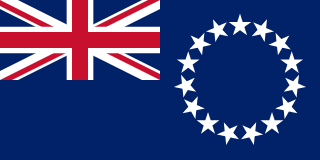The Cook Islands, located in the South Pacific, are an archipelago renowned for their crystal-clear waters and strategic importance for maritime navigation. This guide offers a comprehensive overview of their maritime characteristics, including geography, climate, marine wildlife, as well as port infrastructure and current maritime regulations. Rich in biodiversity and benefiting from major ocean currents, these islands play a key role for ships transiting the region. Moreover, their geopolitical position influences commercial activities and international exchanges. Discover everything you need to know to navigate safely in this unique maritime area.

Explore the strategic ports and maritime infrastructure of cook_islands
Explore the strategic ports and maritime infrastructure of cook islands
The Cook Islands form an archipelago of 15 islands scattered over a vast area of the South Pacific Ocean, covering approximately 2 million square kilometers of exclusive economic zone. Their strategic location between New Zealand and Hawaii makes them a major point of interest for navigation in this part of the globe. Each island has its own characteristics, alternating between low coral atolls and volcanic islands with significant reliefs. The depth of surrounding waters varies greatly, directly impacting the maritime routes taken by commercial and pleasure vessels. Predominant ocean currents, notably the South Equatorial Current, influence marine weather conditions and the distribution of fishery resources. The underwater topography and ecological richness make the Cook Islands a region to be protected and managed prudently to ensure safe and sustainable navigation.
Due to their remoteness from large continents, the Cook Islands possess exceptional marine biodiversity, with some of the best-preserved coral reefs on the planet. These reefs play a crucial role in protecting the coasts against erosion and in providing a habitat for numerous marine species. Local regulations impose strict restrictions on fishing and navigation to preserve this fragile environment. Furthermore, port infrastructure, although limited with a few main ports like Avatiu on Rarotonga, is modernized to accommodate ferries, cargo ships, and cruise vessels, facilitating commercial and tourist exchanges. Finally, the Cook Islands collaborate with several international organizations for maritime surveillance, security, and combating marine pollution, demonstrating their commitment to responsible and sustainable maritime management.
The maritime resources of the Cook Islands represent both an economic asset and an ecological challenge. Fishing, mainly artisanal, is a key activity targeting species such as tuna, mahi-mahi, and lobster. These activities supply both local markets and exports but are strictly regulated by quotas and protected zones to prevent overexploitation. Aquaculture efforts are also developing to diversify resources while minimizing environmental impact. The exclusive economic zone offers significant potential for exploitation rights, notably for hydrocarbons and seabed minerals, although these activities are still exploratory and subject to rigorous environmental assessments.
From a regulatory standpoint, the Cook Islands adhere to international maritime conventions, including SOLAS for ship safety, MARPOL for pollution prevention, and the United Nations Convention on the Law of the Sea. The local navy enforces enhanced surveillance to prevent infractions and ensure compliance with these standards. Maritime and port authorities work closely with shipping companies to ensure smooth traffic and support sustainable development of maritime activities. Additionally, the archipelago is an interesting site for oceanographic research and marine conservation, contributing to global knowledge of tropical marine environments and the implementation of exemplary maritime practices.